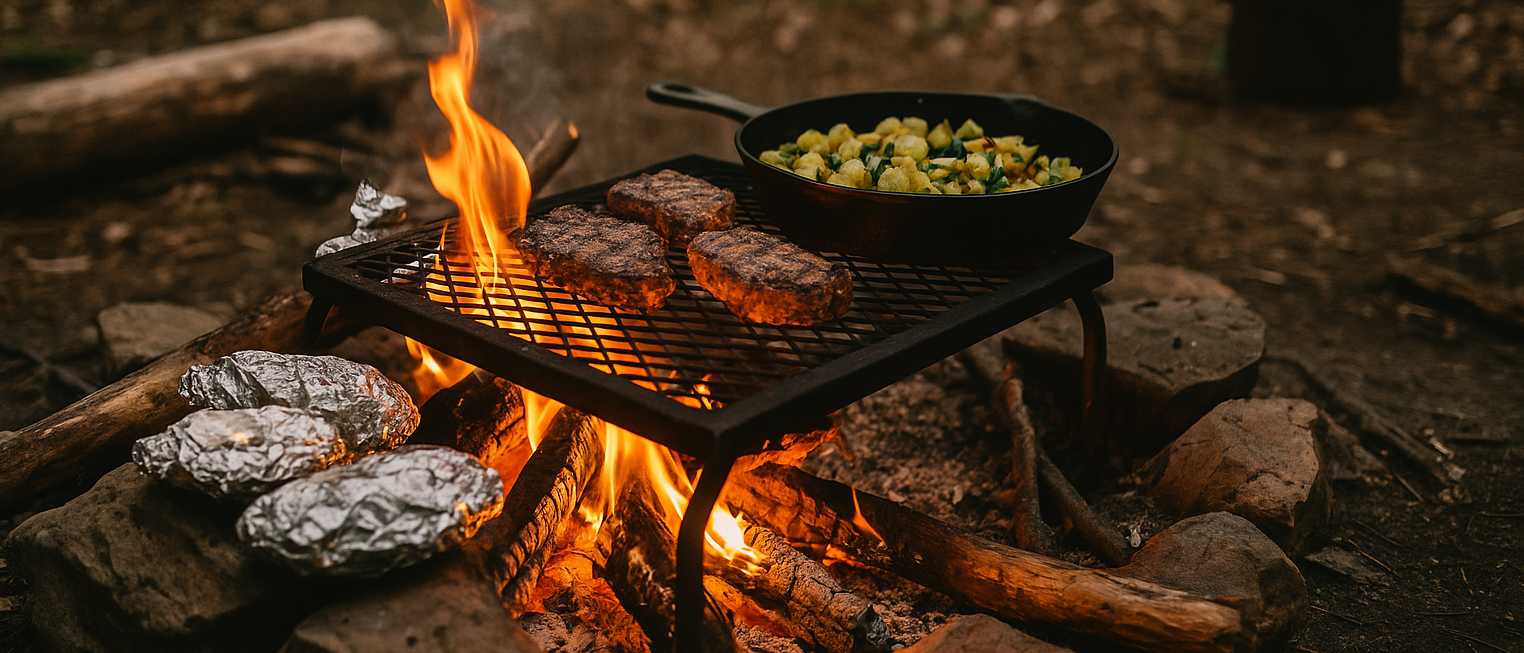
There’s something universally compelling about meat cooked outdoors. The crackle of wood, the aroma of smoke, the ritual of tending a fire — it’s a primal and time-honoured tradition, rich with culture and history. From the high Andes to the Yorkshire Dales, cooking meat over flames connects us to the land, to our ancestors, and to the ingredients themselves.
At The Grid Iron Gourmet, we love to explore not only what we cook, but how. So here’s a journey through some of the world’s most fascinating outdoor meat-cooking traditions — many of which continue to inspire our own techniques here in Britain.
Some of the oldest and most romantic forms of outdoor cooking are the simplest: meat suspended over fire, cooked slowly by radiant heat and embers.
Argentina & Uruguay – Asado The heart of Argentinian outdoor cooking. Large joints or whole animals are cooked slowly over hardwood embers on a grill (parrilla) or metal cross (asador). It’s all about patience, wood selection, and confidence in the raw material.
South Africa – Braai A way of life rather than a method. Think thick lamb chops, boerewors sausages and steaks cooked over wood flames, often served with chakalaka or pap.
Australia – Campfire Cookouts Traditional bush cooking might use a simple grill or cast-iron skillet, with meat cooked directly over fire or wrapped in foil and buried in coals.
Modern grills are based on methods that have been perfected for centuries.
Japan – Yakitori Bite-sized skewers of chicken grilled over binchotan charcoal, prized for its clean burn and intense heat.
Korea – Gogigui Thin-sliced beef and pork cooked over a charcoal grill at the table. It’s all about high heat, short bursts, and lots of dipping sauces.
Middle East & Balkans – Shashlik & Kebab Marinated meat skewers grilled over a mangal (open charcoal brazier), from Russia through Turkey and the Levant.
India & Pakistan – Tandoor Cooking Meats like chicken tikka or seekh kebabs are skewered and blasted at intense heat inside a clay oven sunk into the ground, powered by wood or charcoal.
Mexico – Barbacoa Traditionally a whole lamb or goat wrapped in agave leaves and cooked in an underground pit with smouldering wood.
These methods go back thousands of years and remain deeply ceremonial.
New Zealand – Hāngi A Māori earth oven. Meat is placed on hot stones in a pit, covered in cloth and soil, and left to steam gently for hours.
Peru – Pachamanca An Andean mountain tradition where hot stones are used to cook lamb or pork, potatoes, and maize under a covering of leaves and earth.
Hawaii – Kalua Pig A whole pig, salted and wrapped in banana leaves, slow-cooked in an imu pit until falling apart.
Fiji – Lovo A similar method using hot rocks and leaf coverings for special occasions, producing smoky, tender pork and chicken.
Smoke isn’t just a by-product — in these styles, it’s the main event.
USA – Barbecue In the Carolinas, it’s pulled pork; in Texas, it’s brisket. All slow-cooked for hours in offset smokers using hickory, oak, or mesquite.
Jamaica – Jerk Pits Spicy pork or chicken grilled over pimento wood in a fire pit, often on top of green branches that lend their own flavour.
Northern Europe – Smokehouses Cold-smoked mutton, lamb, or fish is cured and hung in smokehouses across Scandinavia and the Highlands. A method born from necessity, now prized for its complexity.
There’s a bit of spectacle to spit-roasting, but also practicality: turning ensures even cooking and self-basting.
Mexico – Trompo Al Pastor A vertical rotisserie adapted from Lebanese shawarma, used for marinated pork shaved into tacos.
Greece – Gyros / Turkey – Doner Kebab Lamb, beef or chicken turned slowly and sliced thinly for wraps.
Philippines – Lechón A whole pig roasted over coals on a spit for festivals — rich, crisp, and deeply traditional.
Where a flat surface meets a flame, new possibilities open up.
Spain – Plancha A thick steel plate placed over fire or coals, perfect for searing thin cuts or marinated meats.
Mexico – Discada Originally made using an old plough disc, this is cowboy-style cooking at its best: beef, chorizo and peppers fried together over fire.
USA & UK – Dutch Oven Cooking Cast iron pots placed in or over coals — great for stews, pot roasts, or slow-cooked ribs.
Whether it’s a butterflied leg of lamb cooked over lumpwood in the back garden, or a joint of native breed beef smoked slowly on a Kamado, we’re constantly inspired by these traditions. Not because they’re romantic, but because they work.
They’ve stood the test of time.
The best meat deserves the best method — and sometimes, that method is older than the dish itself.
If you’re cooking outdoors this weekend, light a fire, pour something good, and channel one of these time-honoured methods. The results, we promise, are worth the wait.